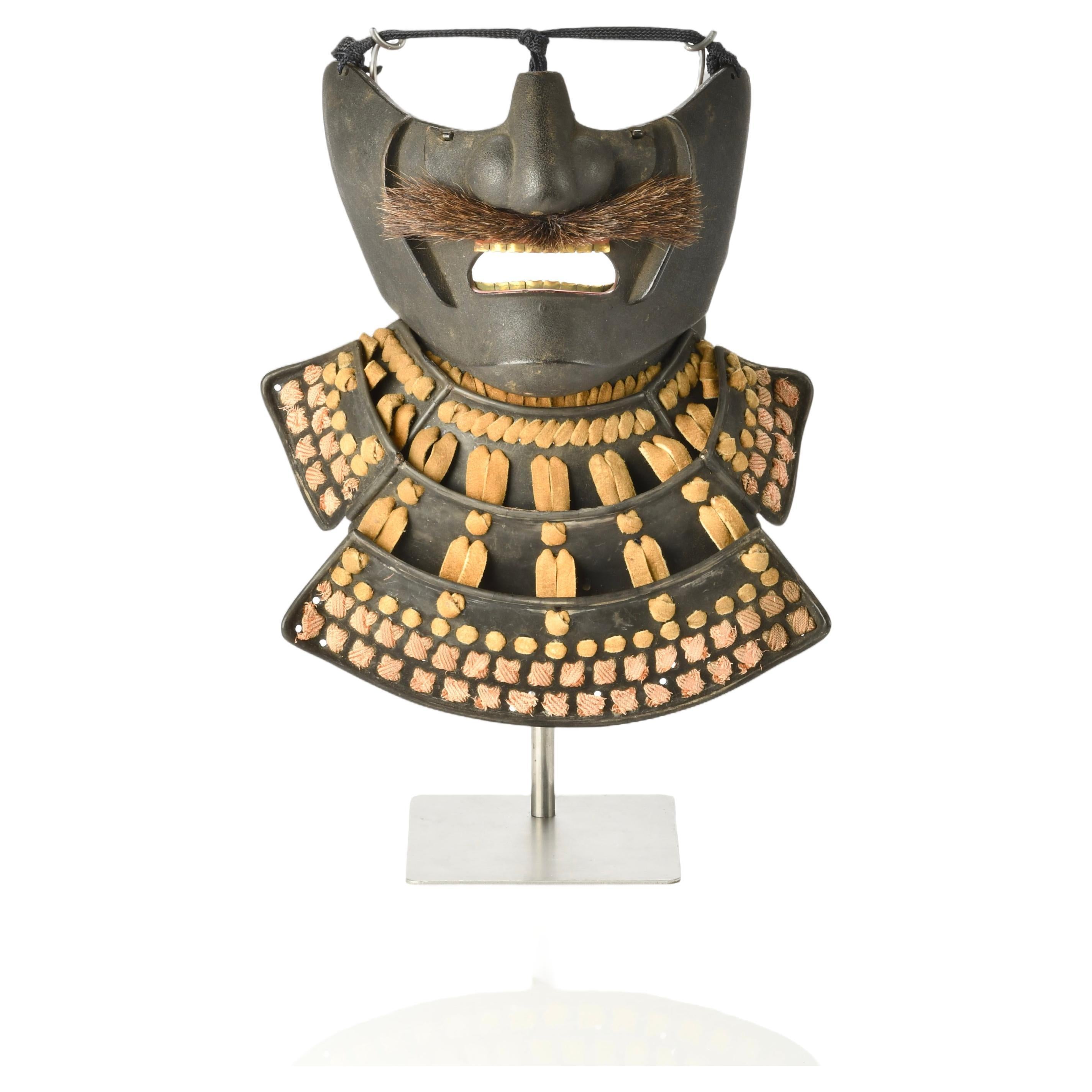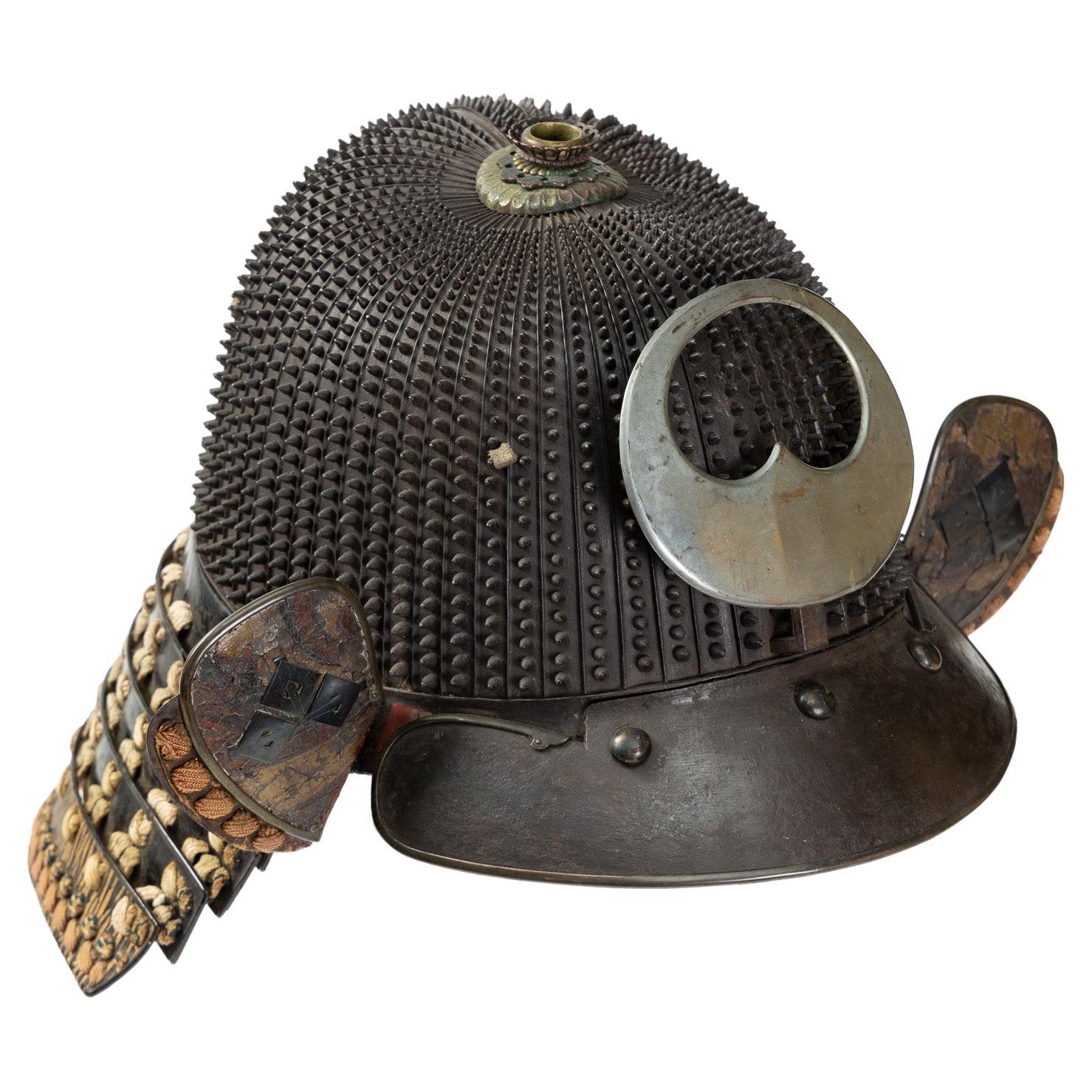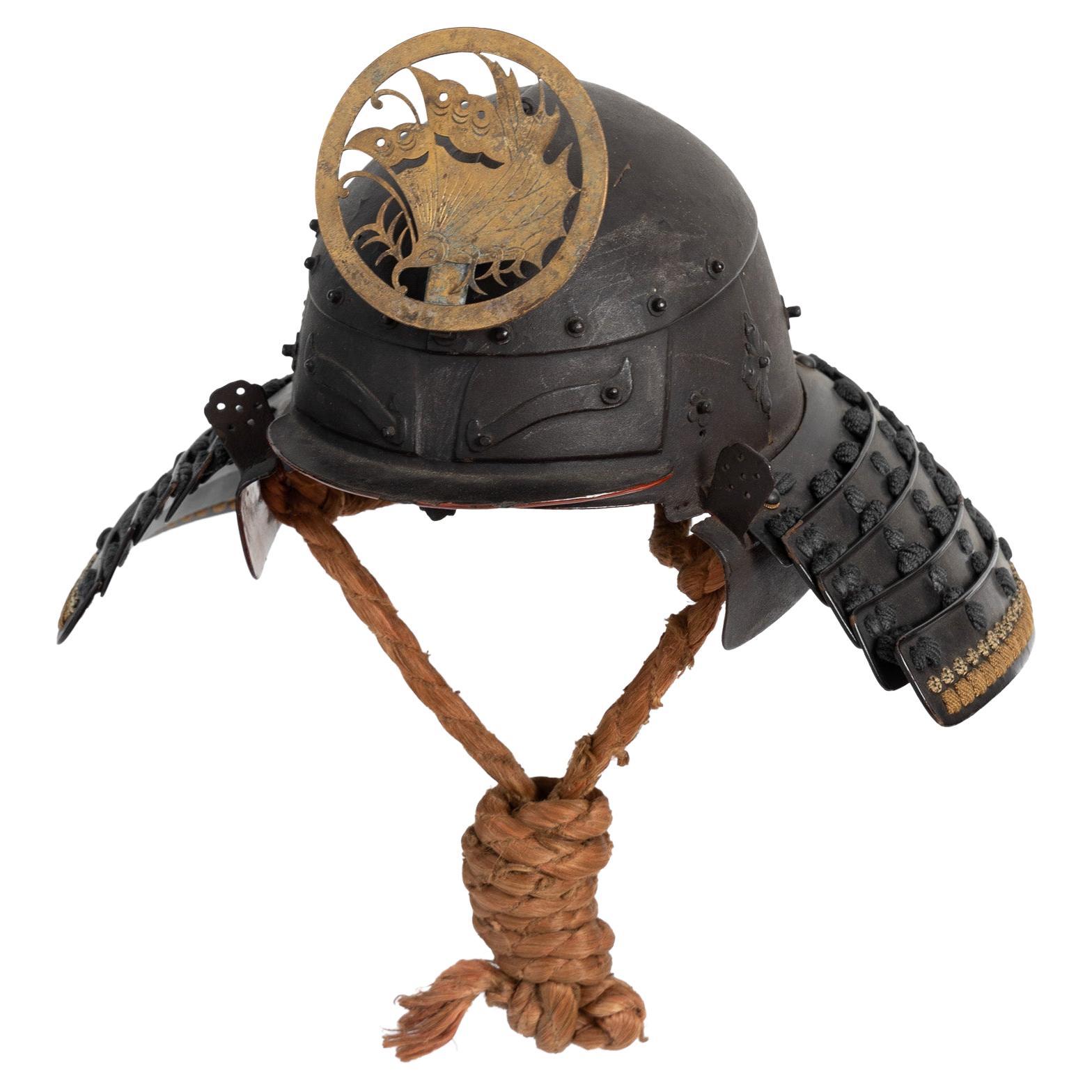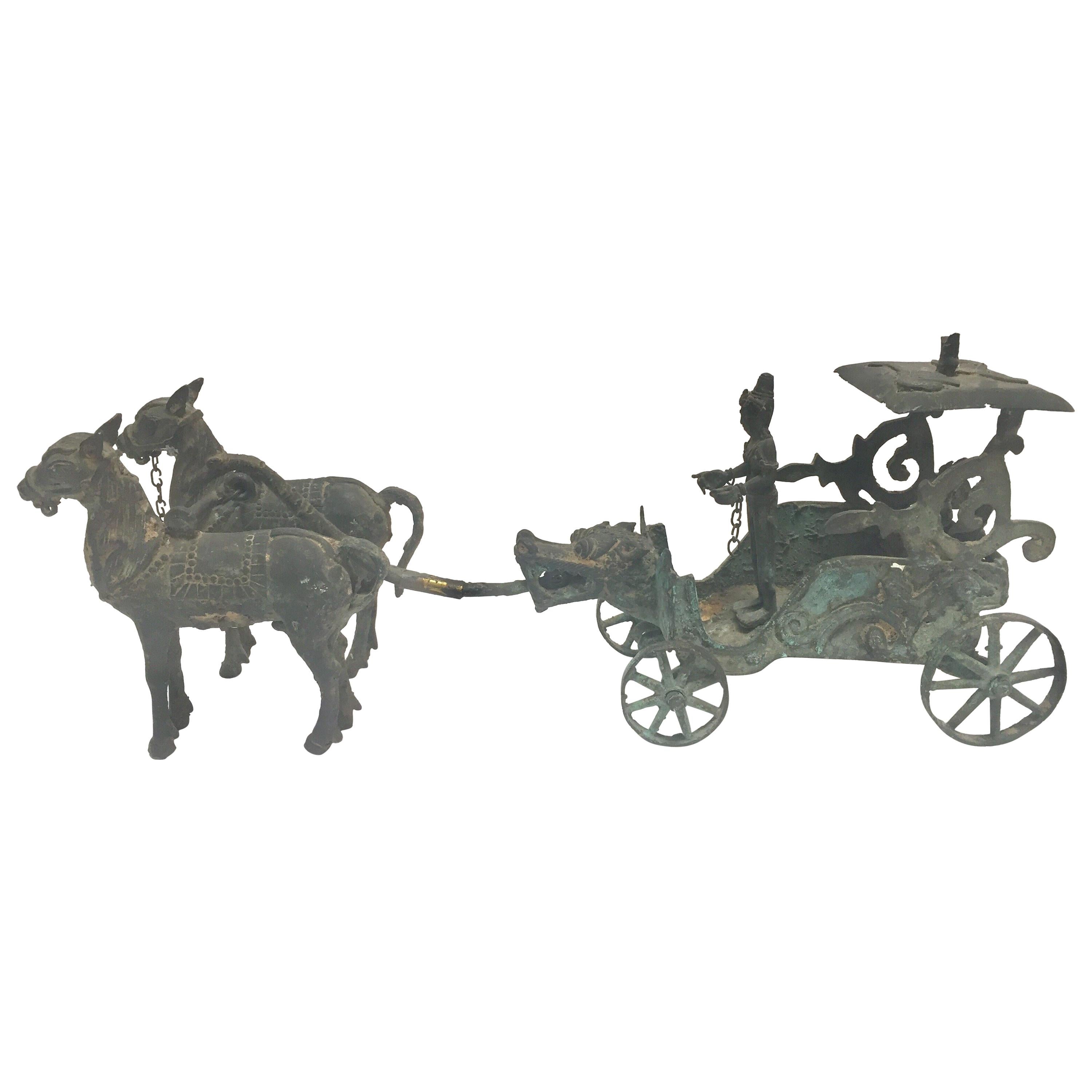Items Similar to Samurai Mask with a Fierce Expression Ressei Menpo
Want more images or videos?
Request additional images or videos from the seller
1 of 9
Samurai Mask with a Fierce Expression Ressei Menpo
About the Item
Samurai mask with a fierce expression
Ressei Menpo
DATE Edo period (1615 - 1867), 18th century
A red lacquered high-level mask, with fierce (ressei) expression finely embossed with wrinkles all over the face. The expression is emphasized by painted beard and mustaches.
- Dimensions:Height: 11.82 in (30 cm)Width: 5.91 in (15 cm)Depth: 7.88 in (20 cm)
- Materials and Techniques:
- Place of Origin:
- Period:
- Date of Manufacture:circa 1750
- Condition:
- Seller Location:Milano, IT
- Reference Number:1stDibs: LU4250230732162
About the Seller
5.0
Recognized Seller
These prestigious sellers are industry leaders and represent the highest echelon for item quality and design.
Established in 2005
1stDibs seller since 2018
10 sales on 1stDibs
Typical response time: 1 hour
- ShippingRetrieving quote...Ships From: Milano, Italy
- Return PolicyA return for this item may be initiated within 7 days of delivery.
More From This SellerView All
- Koboshi Kabuto, Samurai Helmet with Standing Rivets Haruta SchoolLocated in Milano, ITKoboshi kabuto Samurai helmet with standing rivets Haruta School Early Edo Period, 17th century A 62-plate koboshi-bachi [helmet bowl with small s...Category
Antique 17th Century Japanese Arms, Armor and Weapons
MaterialsIron
- Go-Mai Uchidashi Dō Tosei Gusoku Samurai Armor Decorated with an Embossed RabbitLocated in Milano, ITGo-mai uchidashi do tosei gusoku Samurai armor decorated with an embossed rabbit Edo period, 19th century This samurai armor is complete and original, with consistent elements...Category
Antique 19th Century Japanese Metalwork
MaterialsIron
- Okitenugui Kabuto Samurai Helmet Shaped as a Head Towel Saika, Early Edo PeriodLocated in Milano, ITOkitenugui kabuto Samurai helmet shaped as a head towel Saika, early Edo period, 17th century The Haruta armorers who moved to Kii province in the early 17th century, took the name from the village where they worked, Saika, near Wakayama, possibly on request of the local daimyo, Asano Yukinaga, a great armour amateur. Specialised in the construction of plate helmets, they produced mainly two typologies of kabuto: one with six plates covered with a chrysanthemum-shaped plate on top and one shaped as a “head towel”, called okitenugui. The latter type of kabuto employs very heavy plates crafted in a curved manner and was improved in order to make it resistant to firearms. This okitenugui kabuto features some distinctive decorations of the Haruta school, including the application of cut-out iron elements, including eyebrows, washers and lozenge-shaped decorations on the sides. The ring on the top, however, is a rare feature and could be used to hold a small war flag.Category
Antique 17th Century Metalwork
MaterialsIron
- Suji-bachi kabuto and menpo Signed by Myōchin Muneaki and dated 1853Located in Milano, ITSuji-bachi kabuto and menpo Signed by Myōchin Muneaki and dated 1853 Signature: Kaei 6 - Ushidoshi Oshu Nihonmatsu-ju Myōchin Ki (no) Muneaki saku Made in 1853 by Myōchin Ki Muneak...Category
Antique 18th Century and Earlier Metalwork
MaterialsIron
- Shinto Sunnobi Tanto by Takahashi Naganobu, 1846Located in Milano, ITA Shinto Sunnobi Tanto by Takahashi Naganobu, 1846 Unsho Takahashi Naganobu / A lucky day of August Koka san-nen (1846) Yokota became monk with this sword - NBTHK Tokubetsu Hozon To...Category
Antique 19th Century Japanese Metalwork
MaterialsIron
- Sujibachi kabuto 62-plate samurai helmet Haruta school, Edo periodLocated in Milano, ITSujibachi kabuto 62-plate samurai helmet Haruta school, Edo period 17th-18th century A lamellar helmet consisting of sixty-two plates joined with five rows of rivets. The surface is...Category
Antique Mid-17th Century Japanese Metalwork
MaterialsIron
You May Also Like
- A Japanese Samurai ressei menpo maskLocated in Milano, ITSamurai menpo mask with the ressei (fierce) expression, belonging to the me-no-shita "half-face" type, which stands out for its leather surface to simulate ...Category
Antique 18th Century Japanese Japonisme Antiquities
MaterialsLeather
- Tibetan Gau Traveling Shrine with Silk Case, c. 1900Located in Chicago, ILTibetan traveling shrines, known as Gau, were believed to offer protective powers and were used to hold and carry sacred objects during long journeys. Crafted over a century ago, Bud...Category
Early 20th Century Tibetan Tibetan Religious Items
MaterialsBrass, Copper
- Antique Asian Bronze Chariot with Dragon Head Pulled by HorsesBy RajhastaniLocated in North Hollywood, CAFrom the Ramakien a Thai Ramayana. A scene from Ramakian or Ramayan, the Indian epic Lakshman riding in a chariot along with Rama and Sita sitting in the back. After his victory over Ravana, Sri Rama prepares to leave for Ayodhya, Rama now told Vibheeshan that there was just one more day...Category
Early 20th Century Indian Folk Art Metalwork
MaterialsBronze
- Antique circa 1920 Chinese Export Floor Standing Bell with Wrought Iron StandLocated in GBWe are delighted to offer for sale this exquisite circa 1920 Chinese Export floor standing bell on wrought iron stand A very well made and decorative...Category
Vintage 1920s Chinese Chinese Export Metalwork
MaterialsBrass, Wrought Iron
- Vintage Bronze Handmade Singing Bowl or Standing Bowl with Mallet on PillowLocated in Topeka, KSBeautiful singing bowl or standing bowl with a mallet and its playing pillow. Handmade of bronze or bell metal and showing the makers hand. It is in wonderful vintage condition with ...Category
20th Century Chinese Export Metalwork
MaterialsBronze
- Large Himalayan Inlaid Bronze Vajra with Wrathful Faces, 15th-16th CenturyLocated in Austin, TXA large and unusual Himalayan bronze and mixed metal nine prong vajra featuring wrathful faces. In the style of the Tangut (Western Xia) Kingdom (1038 to 1227), but probably later, most likely 15th-16th century. The body of the vajra crafted from a copper alloy, with five wrathful faces on either side and gold and silver inlays to the center. The prongs crafted of iron, with each side having eight prongs arcing outwards around a central prong before coming back to a copper alloy point. The vajra is meditational tool...Category
Antique 16th Century Mongolian Metalwork
MaterialsGold, Silver, Bronze, Iron





